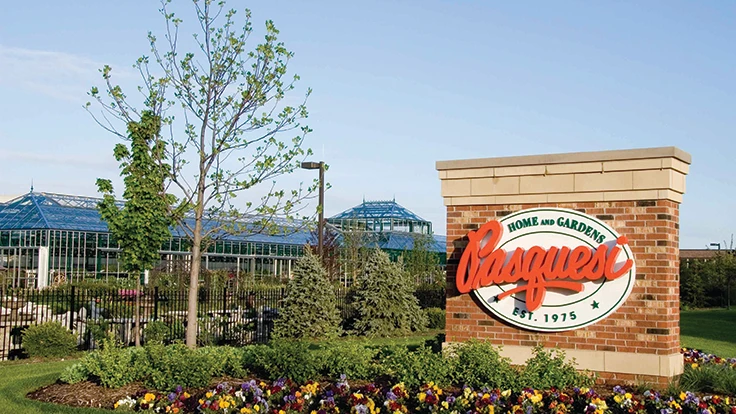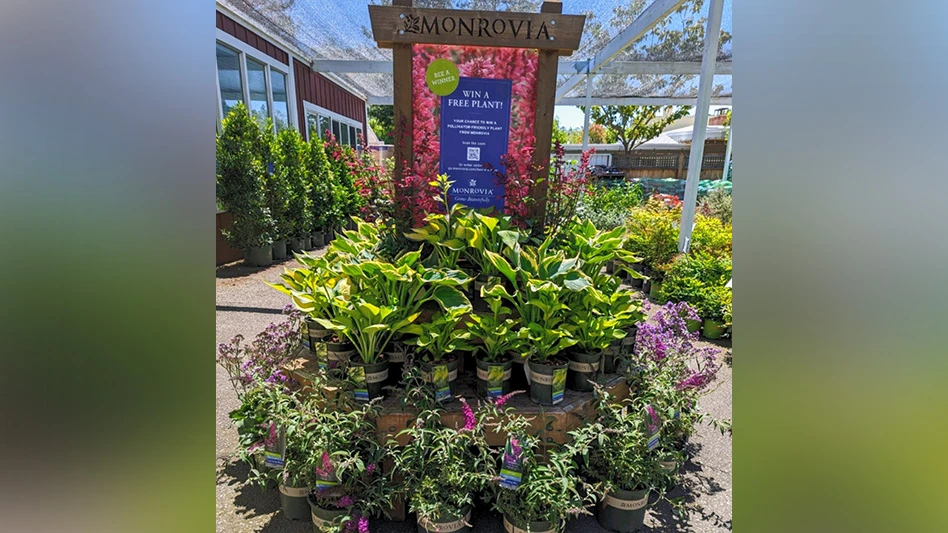
A plant can’t grow in an unwelcoming environment. Customers are less likely to walk into an unappealing building. A well-built greenhouse can solve both of these problems, but independent garden center retailers may face tough decisions over what kind of structures they should use for their facilities. While most green goods vendors, from retailers to grower-retailers and wholesalers, see greenhouses as standard equipment for cultivating or maintaining their plants, there is value a custom greenhouse yields in terms of curb appeal and visual identity. Unique aesthetics were at the top of the list for Pasquesi Home and Gardens in Lake Bluff, Ill., when the retailer, which grows none of its plant material, constructed a display greenhouse in 2006. “We wanted a structure that was, first of all, a quality greenhouse,” says owner Marie Pasquesi. “We did not want a typical design or a typical-looking greenhouse that you would think of. We are strictly in the retail business and we sell to a more affluent clientele, and we wanted to present our products in that way also. The building is an excellent product and also, it has some artistic design to it.” Pasquesi says that as a retail business, her store requires an eye-catching exterior to succeed, while growing operations may not find unique design as important. However, that’s not to say that growing-oriented or wholesale greenhouses have to be utilitarian or plainly designed. W.H. “Buzz” Sierke, president of Gothic Arch Greenhouses, Inc., says the right greenhouse can present a variety of advantages to a business. Although such a move would make for a considerable investment and require thorough planning, a quality greenhouse structure can allow a retailer to explore the option of in-house growing or vice versa, Sierke says. “A retailer may want to invest in a production greenhouse to become a grower to ensure availability of hard-to-find plants they typically would have to outsource, giving the retailer ‘in-house’ control of particular plants,” Sierke says. “This also gives the retailer the flexibility to offer more colors and variety based on historical demand, that otherwise might not be available from the wholesale grower. “On the other hand, a wholesale grower may want to diversify into a ‘retail’ division to be able to appeal to the retail market and to add significantly to his bottom line because of increased product offerings sold at a higher profit margin.” No matter the goal of your new greenhouse structure, eliciting a supportive response from customers is an important outcome to pursue. Pasquesi says patron reactions to her greenhouse facility have been largely positive since its construction. “Our customers loved it,” Pasquesi says. “Certainly it was something they didn’t expect, even for the city when it came to building it. Everybody thinks of a greenhouse the way you typically see a growing greenhouse and when you present something different, then it’s exciting. I’ve actually had people wanting to know if they could have a wedding [in our greenhouse]. I think it was a pleasant surprise.” As well as presenting a welcoming shopping space, Pasquesi says her greenhouse also has the advantage of built-in, adjustable shading and temperature control technology, which is crucial for preventing disease damage among plants in the facility. Sierke says greenhouse shading can be used to connect shopping areas for customer foot traffic. This can reduce the impact of inclement weather, which often drives away shoppers. “In the retail garden center arena, we’ve seen the trend towards the installation of more covered area to serve as outside sales area for additional inventory as well as covered walkways from one sales area to another to eliminate the fragmented foot print and to connect sales areas to create a better shopping environment and experience for the customer,” Sierke says. “There is a high [return on investment] on this level of infrastructure to safeguard against lost sales and revenue due to bad weather during peak buying seasons.” Though the advantages of a custom-built greenhouse are many, Sierke says a recognizable visual style remains the main reason for retailers to invest in a structure. “The main challenge for a retailer is to attract and welcome in the client,” Sierke says. “There are many things that the retailer can do towards an enhanced ‘curb-appeal’ storefront. The addition of colored [lights], porches, pergolas, automatic doors, improved signage and large areas of storefront glass for high visibility into the store. Remember that if the customer doesn’t come into the store, there is no chance of making a sale.”




Explore the December 2015 Issue
Check out more from this issue and find your next story to read.
Latest from Garden Center
- This Florida garden center's busiest days are in the fall, not spring. Find out how they do it
- Terra Nova Nurseries releases new agastache variety, 'Peach Pearl'
- The Certified Shopify Online Garden Center provides local retailers with ecommerce tool
- Meet the All-America Selections AAS winners for 2025
- Endless Summer hydrangeas and Suntory Senetti glam up Grammys red carpet
- Ball Seed releases 2025 edition of 'Thrive and Flourish' for landscape and garden retail
- American Floral Endowment's Fred C. Gloeckner Foundation Research Fund accepting grant proposals
- Floral Marketing Fund and CalFlowers partner to advance floral industry





